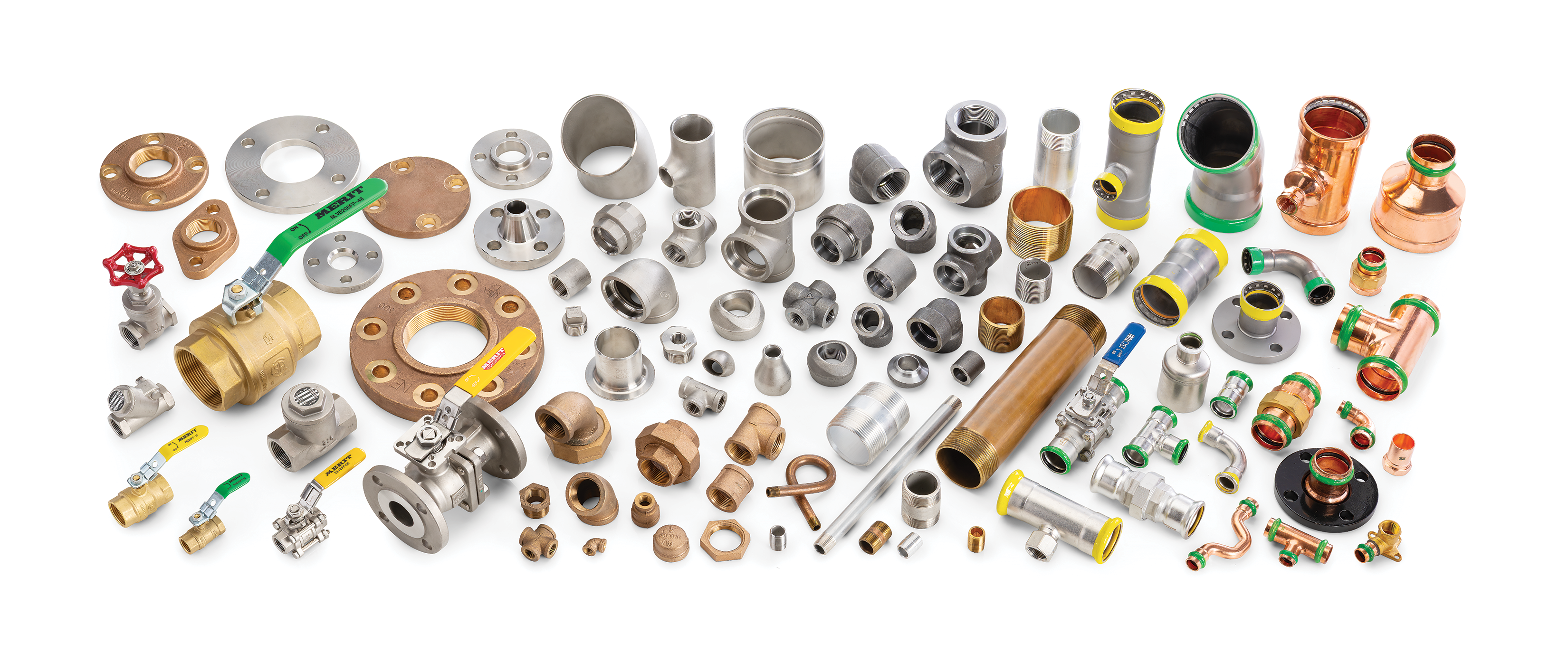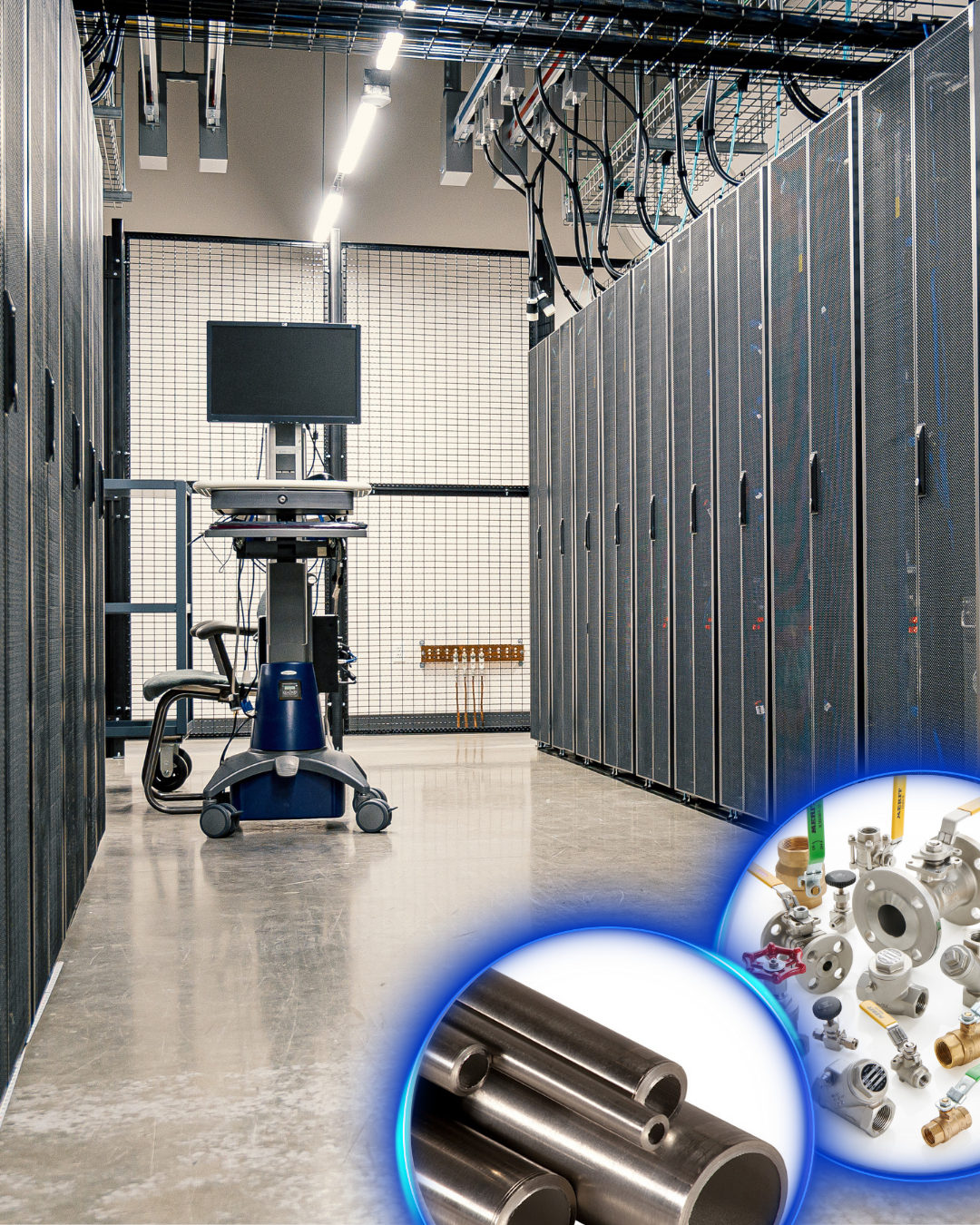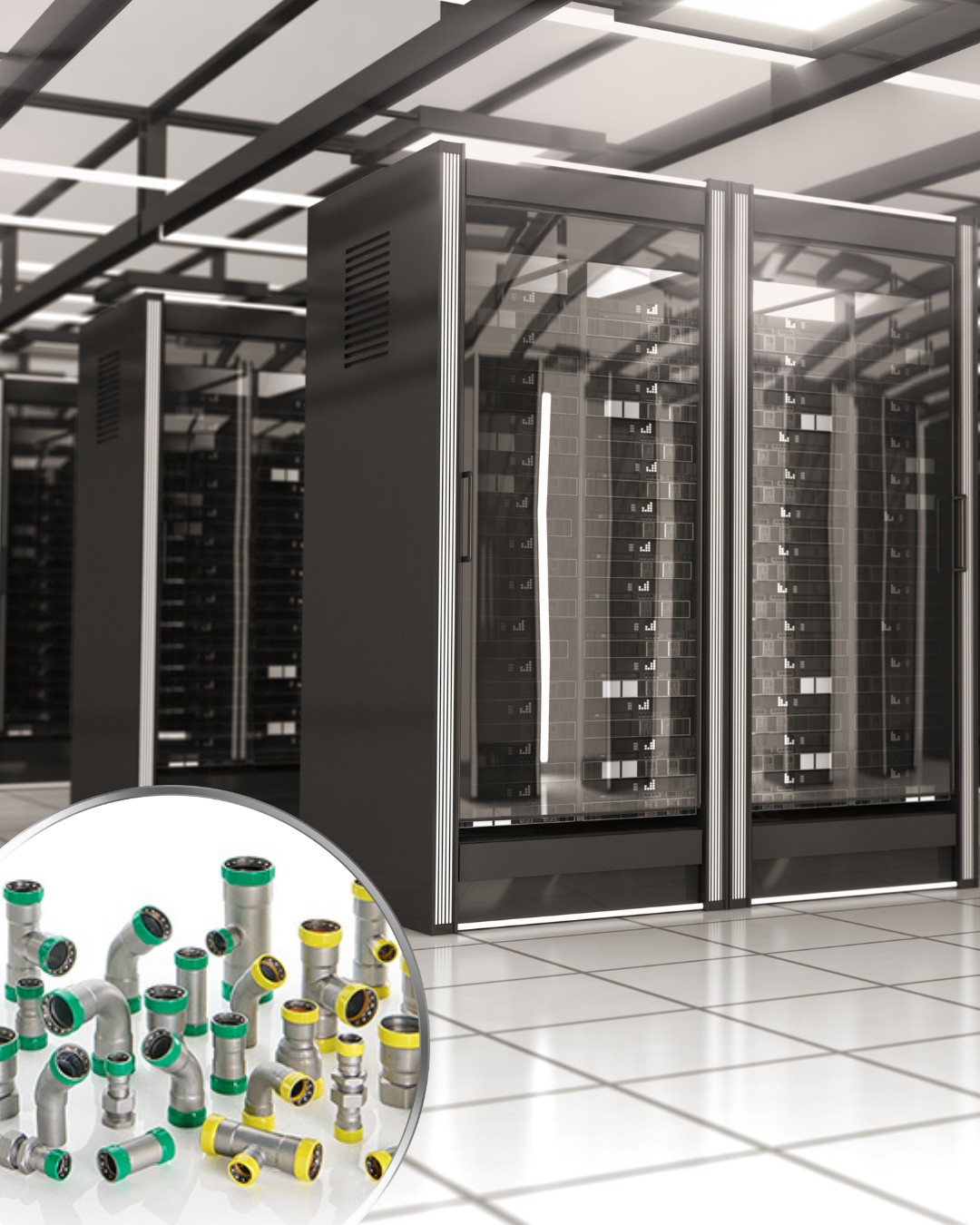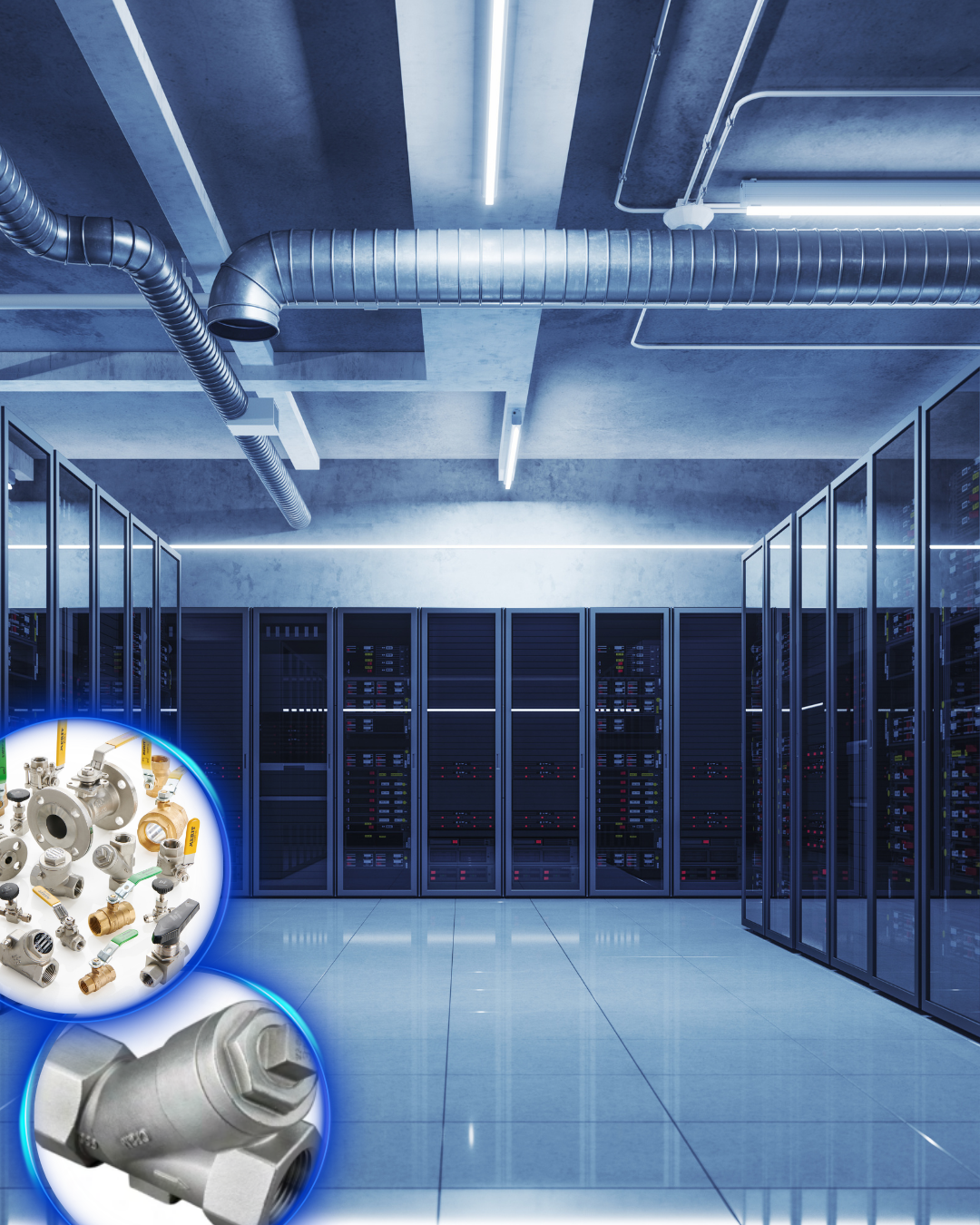
With the growth of the digital world, data centers now power everything from business applications to AI technologies. With higher compute density and rising heat loads, one thing is clear, cooling systems must evolve.
The piping components at the core of those systems must be durable, scalable, and efficient.
This article explores the data center landscape, new cooling demands, and how our PVF solutions help wholesalers meet customer needs in this rapidly growing industry.
Modern data centers operate continuously and at high loads, making system reliability a top priority. While IT hardware gets a lot of attention, the mechanical parts are also important. Cooling systems, power delivery, and fluid transport help keep everything running smoothly and efficiently.
Cooling systems are central to maintaining optimal operating conditions. As these systems transition from traditional air-based methods to liquid and hybrid models. The role of PVF components becomes even more important. Stainless steel piping offers enhanced performance characteristics, corrosion resistance, strength under pressure, and thermal stability needed to keep data centers running smoothly.
The data center industry includes a range of facility types, each with distinct performance, scalability, and cooling requirements. Understanding these variations helps distributors align product offerings with contractor and operator needs.
 What are Enterprise Data Centers
What are Enterprise Data Centers These are privately owned and managed by individual companies to support internal operations. Often built near corporate campuses, enterprise data centers typically begin with air cooling and may evolve toward hybrid systems as performance needs increase. Enterprise sites require high-reliability components for HVAC and chilled water loops. Stainless steel pipe, pipe flanges, and check valves provide corrosion resistance and ensure the longevity of systems under continuous operation.
It is estimated that there are approximately 1,000 – 1,500 enterprise data centers within the United States.
 Colocation data centers house equipment for multiple clients within a single facility. These shared environments require scalable and modular infrastructure that supports a wide range of configurations.
Colocation data centers house equipment for multiple clients within a single facility. These shared environments require scalable and modular infrastructure that supports a wide range of configurations.
Colocation environments benefit from solutions such as press fittings and valves. Stainless steel remains the material of choice for its durability and compatibility with diverse cooling media.
In the United States, it is estimated that approximately 1,088 colocation data centers exist with up to 256 facilities either being planned or under construction.
 What are Hyperscale Data Centers
What are Hyperscale Data Centers These large-scale facilities are owned and operated by cloud service providers such as Amazon Web Services, Google, and Microsoft. Designed for efficiency and redundancy at scale, hyperscale centers often require high-capacity liquid cooling systems.
High-volume stainless steel tubing and pipe valves are needed to manage large coolant flows. Leak-proof construction and corrosion resistance are critical in high-temperature, high-pressure liquid environments.
Throughout the United States, it is estimated that there are 300-600 hyperscale data centers in operations with an estimated 152 in design or construction stages.
 Located close to end-users, edge data centers reduce latency for applications that require real time processing like IoT and video streaming. They are typically compact and are in remote environments.
Located close to end-users, edge data centers reduce latency for applications that require real time processing like IoT and video streaming. They are typically compact and are in remote environments.
Edge data centers demand space efficient piping solutions, such as press fittings and compact ball valves. Flexible stainless steel hoses are also beneficial for them.
 What are Modular Data Centers
What are Modular Data Centers These prefabricated units can be deployed rapidly in remote or underserved locations. Often used in disaster recovery, military, or oil and gas operations, modular data centers are made for quick installation and easy scalability.
Prefabricated centers benefit from press stainless steel systems that simplify field installation. Grooved fittings and preassembled piping supplies speeds deployment and reduce labor costs.
Within the United States, modular data center information; however, it is estimated that 100-500 data centers exist today.
 Artificial intelligence workloads, including machine learning and generative AI, are pushing servers to new thermal limits. As a result, direct chip liquid cooling and immersion cooling are becoming more prevalent.
Artificial intelligence workloads, including machine learning and generative AI, are pushing servers to new thermal limits. As a result, direct chip liquid cooling and immersion cooling are becoming more prevalent.
AI facilities require advanced liquid handling systems. Pipe Valves and strainers help manage coolant distribution and filtration.
The number of AI data centers in the USA is currently a best guess with approximately 1100-1500. However, reports suggest that approximately 449 of these data centers are under construction.
As computing demands evolve, so do the cooling strategies used in data centers. The shift from traditional air cooling to liquid based systems has direct implications for piping products.
Air cooled systems are among the most used cooling strategies in small to mid-sized data centers. These systems rely on computer room air conditioning or computer room air handler units to circulate cold air throughout the data hall.
Cool air is directed through perforated floor tiles or overhead ducts toward server racks, while hot air is returned to the cooling units to be reconditioned. Even in primarily air-cooled environments, stainless steel piping plays a key role in supporting air handling units.
Components such as pipe flanges, elbow pipe fittings, and reducing coupling pipe fittings are used for routing airflow and managing condensate drainage. Stainless steel’s corrosion resistance and thermal durability make it ideal for data centers where reliability and uptime are needed.
Driven by increasing heat densities and sustainability goals, liquid cooling is gaining widespread adoption. Systems range from cold plate and rear-door heat exchangers to full immersion cooling tanks.
Liquid cooling demands closed loop systems with high integrity seals and corrosion resistant tubing. Leak proof stainless steel press fittings support these systems under high flow and thermal load conditions.
Some data centers combine air and liquid systems for cost-effectiveness and operational flexibility. These hybrid setups have to be adaptable to support upgrades. Multi valve systems and corrosion resistant valves offer flexibility and long-term performance in hybrid cooling environments.
Merit Brass provides a full range of PVF components for data center cooling systems. Below is a breakdown of core products and their relevance to various cooling technologies.
|
Component |
Application |
Merit Brass Offering |
|
Stainless Steel Pipe & Tubing |
Coolant transport |
Type 304/Type 316 grades for corrosion resistance and strength |
|
Pipe Flanges |
Secure pipe connections |
Bolted/welded options for high-pressure loops |
|
Pipe Valves |
Flow control |
Ball valve, gate valve, and check valves in stainless steel |
|
Pipe Fittings |
Fluid direction and space optimization |
Press or threaded fittings for fast installation |
|
Manifolds |
Coolant distribution across systems |
N/A |
|
Filters and Strainers |
Protect components from debris |
Corrosion-resistant y-strainers to allow flow integrity |
|
Hangers and Supports |
Structural stability and vibration control |
N/A |
|
Flexible Hoses |
Vibration-prone or mobile applications |
N/A |
From AI-optimized data centers to remote edge installations, cooling infrastructure is only becoming more important. As systems become more advanced and environmental demands grow, stainless steel PVF components will continue to play a significant role in ensuring uptime, efficiency, and sustainability.
Ready to learn more about our stainless steel PVF solutions for data centers? Contact our team or request a quote today. Whether you are planning a hyperscale facility or supplying a modular deployment, Merit Brass delivers the products and expertise you need to succeed.
Author: Addison Towne, Marketing Intern
Sources:
Data Center Network Architecture - Key Components, Challenges and Insights - Park Place Technologies
https://www.mordorintelligence.com/ The United States counts 5,388 data centres | Data Centre Solutions
8/18/2025 10:19:58 AM